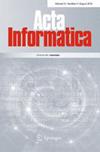昆虫病原线虫对新秀丽隐毛虫(guenÉe)的作用(鳞翅目:蛾科)
IF 0.4
4区 计算机科学
Q4 COMPUTER SCIENCE, INFORMATION SYSTEMS
引用次数: 0
摘要
在害虫管理中使用昆虫病原线虫是减少几种作物中害虫造成的产量和/或损害损失的一种替代方法。本研究旨在评估印度异杆线虫(Nemata:Rhabditida)和卡氏锥虫(Steinerma carpocapsae)在秀丽隐杆新千层虫(Guenee)(鳞翅目:Crambidae)前蛹中的表现,并确定卡氏锥菌在土壤中的致病性的时间可行性。将线虫物种在蒸馏水中稀释至每只秀丽隐杆线虫的前蛹(IJs昆虫-1)50、65、83、107、138、178、229、295、380和500个感染幼虫。随着两个研究物种浓度的增加,秀丽隐杆线虫前蛹的死亡率更高。Carpccapsae线虫是最有效的,在65个IJs昆虫-1的浓度下,其致死率为82.93%,LC50为24.32个IJs-昆虫-1。在致病性试验中,在先前种植番茄幼苗的花盆中以100JI/cm²的浓度施用车皮菌。作为阳性对照,使用经蒸馏水处理的番茄幼苗。S.carpccapse表现出24天的土壤活力。因此,Carpccapsae可以成为秀丽隐杆线虫害虫综合治理(IPM)的重要工具。本文章由计算机程序翻译,如有差异,请以英文原文为准。
PERFORMANCE OF ENTOMOPATHOGENIC NEMATODES ON NEOLEUCINODES ELEGANTALIS (GUENÉE) (LEPIDOPTERA: CRAMBIDAE)
The use of entomopathogenic nematodes in pest management is an alternative to reduce the yield and/or damage losses caused by pests in several crops. The present study aimed to evaluate the performance of Heterorhabditis indica (Nemata: Rhabditida) and Steinernema carpocapsae (Nemata: Rhabditida), in pre-pupae of Neoleucinodes elegantalis (Guenee) (Lepidoptera: Crambidae) and determine the temporal viability of the pathogenicity of S. carpocapsae applied to soil. The nematode species were diluted in distilled water to 50, 65, 83, 107, 138, 178, 229, 295, 380 and 500 infective juveniles per pre-pupae (IJs insect-1) of N. elegantalis. The mortality of pre-pupa of N. elegantalis was higher as the concentrations of both studied species increased. The nematode S. carpocapsae was the most effective, causing mortality of 82.93% in the concentration of 65 IJs insect-1 and an LC50 of 24.32 IJs insect-1. In the pathogenicity test, S. carpocapsae was applied in the concentration of 100 JI/cm² in pots previously planted with tomato seedlings. As positive control was used tomato seedlings treated with distilled water. S. carpocapse presented soil viability of 24 days. Thus, S. carpocapsae can be an important tool in the integrated pest management (IPM) of N. elegantalis.
求助全文
通过发布文献求助,成功后即可免费获取论文全文。
去求助
来源期刊

Acta Informatica
工程技术-计算机:信息系统
CiteScore
2.40
自引率
16.70%
发文量
24
审稿时长
>12 weeks
期刊介绍:
Acta Informatica provides international dissemination of articles on formal methods for the design and analysis of programs, computing systems and information structures, as well as related fields of Theoretical Computer Science such as Automata Theory, Logic in Computer Science, and Algorithmics.
Topics of interest include:
• semantics of programming languages
• models and modeling languages for concurrent, distributed, reactive and mobile systems
• models and modeling languages for timed, hybrid and probabilistic systems
• specification, program analysis and verification
• model checking and theorem proving
• modal, temporal, first- and higher-order logics, and their variants
• constraint logic, SAT/SMT-solving techniques
• theoretical aspects of databases, semi-structured data and finite model theory
• theoretical aspects of artificial intelligence, knowledge representation, description logic
• automata theory, formal languages, term and graph rewriting
• game-based models, synthesis
• type theory, typed calculi
• algebraic, coalgebraic and categorical methods
• formal aspects of performance, dependability and reliability analysis
• foundations of information and network security
• parallel, distributed and randomized algorithms
• design and analysis of algorithms
• foundations of network and communication protocols.
 求助内容:
求助内容: 应助结果提醒方式:
应助结果提醒方式:


